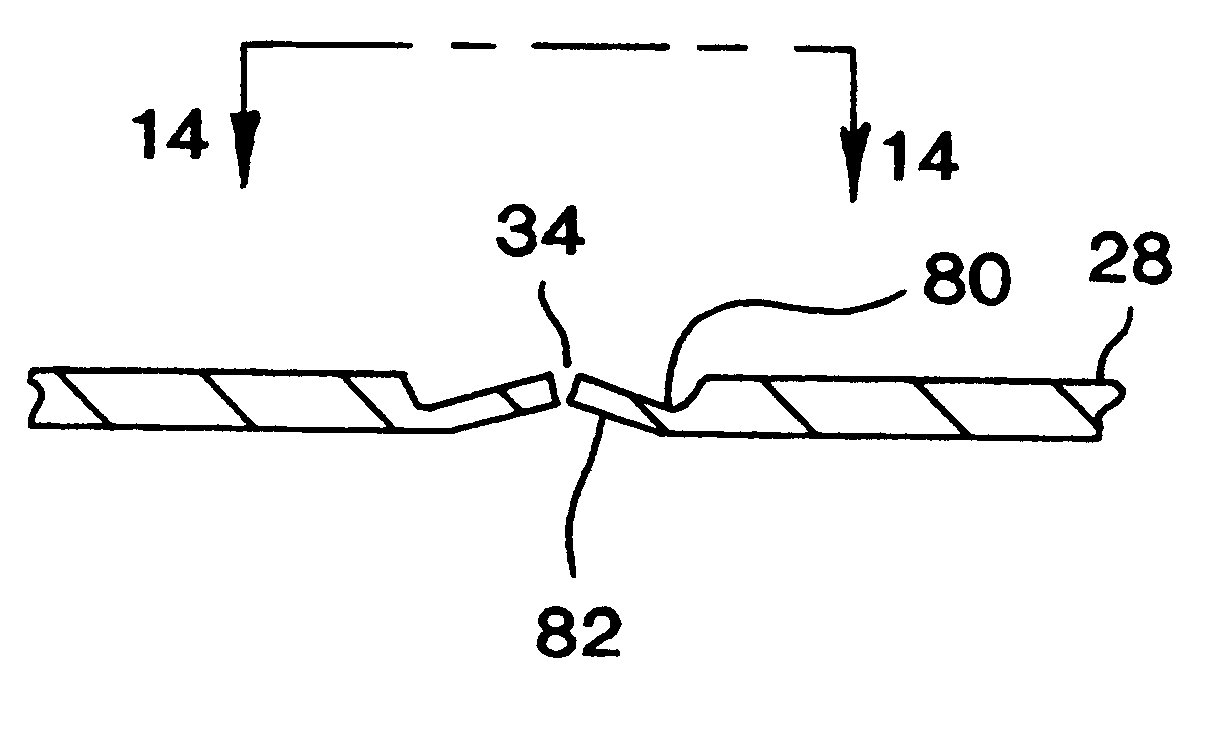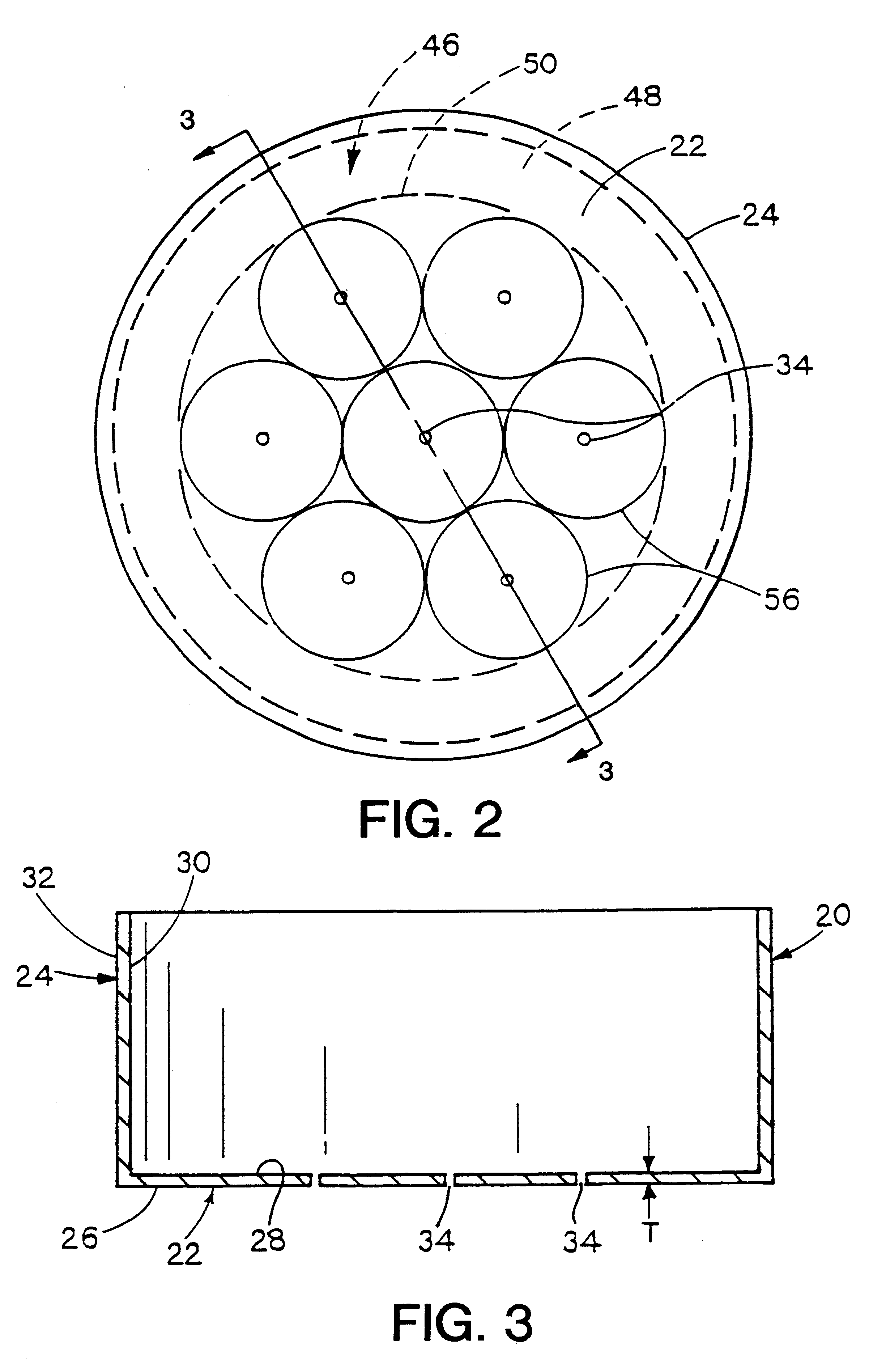Metal-air cathode can, and electrochemical cell made therewith
a cathode can and metal-air technology, which is applied in the direction of cell components, cell components, jackets/cases materials, etc., can solve the problems that the relationship between the opening and the thickness of the bottom of the can may become less relevant, and achieve the effect of reducing the weight loss due to moisture evaporation and maintaining the electrical performance characteristics of the cell
- Summary
- Abstract
- Description
- Claims
- Application Information
AI Technical Summary
Benefits of technology
Problems solved by technology
Method used
Image
Examples
examples 2 , 12
Examples 2, 12, and 24 suggest that the preferred port size depends in part on the absolute size of the imaginary closed area 56 represented by the intersection of the plume 58 with the reaction surface 54. Assuming each port supports an equal proportion of the reaction surface (Active Area), each port in Example 2 supports 0.701 / 6=117 mm.sup.2 of the reaction surface while each port in Examples 12 and 24 supports 72 mm.sup.2 and 96 mm.sup.2 respectively. Thus, in general, the smaller the area of the reaction surface to be supported by each port, the smaller the port size can be.
Following the empirical data of e.g. FIG. 6 to its logical conclusion, the ideal port configuration comprises an infinitely large number of ports evenly distributed on the bottom 22, adjacent reaction surface 54, each port being infinitesimally small in size.
However, from a practical standpoint, the actual number of ports will generally be finite, and will be governed at least in part by the incremental incr...
PUM
| Property | Measurement | Unit |
|---|---|---|
| diameter | aaaaa | aaaaa |
| effective diameter | aaaaa | aaaaa |
| effective diameter | aaaaa | aaaaa |
Abstract
Description
Claims
Application Information
 Login to View More
Login to View More - R&D
- Intellectual Property
- Life Sciences
- Materials
- Tech Scout
- Unparalleled Data Quality
- Higher Quality Content
- 60% Fewer Hallucinations
Browse by: Latest US Patents, China's latest patents, Technical Efficacy Thesaurus, Application Domain, Technology Topic, Popular Technical Reports.
© 2025 PatSnap. All rights reserved.Legal|Privacy policy|Modern Slavery Act Transparency Statement|Sitemap|About US| Contact US: help@patsnap.com



